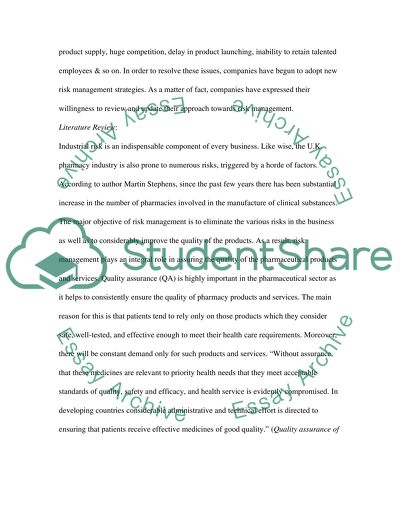Cite this document
(“An evaluation and analysis of risk management: UK pharmacy industry Essay”, n.d.)
An evaluation and analysis of risk management: UK pharmacy industry Essay. Retrieved from https://studentshare.org/miscellaneous/1564906-an-evaluation-and-analysis-of-risk-management-uk-pharmacy-industry
An evaluation and analysis of risk management: UK pharmacy industry Essay. Retrieved from https://studentshare.org/miscellaneous/1564906-an-evaluation-and-analysis-of-risk-management-uk-pharmacy-industry
(An Evaluation and Analysis of Risk Management: UK Pharmacy Industry Essay)
An Evaluation and Analysis of Risk Management: UK Pharmacy Industry Essay. https://studentshare.org/miscellaneous/1564906-an-evaluation-and-analysis-of-risk-management-uk-pharmacy-industry.
An Evaluation and Analysis of Risk Management: UK Pharmacy Industry Essay. https://studentshare.org/miscellaneous/1564906-an-evaluation-and-analysis-of-risk-management-uk-pharmacy-industry.
“An Evaluation and Analysis of Risk Management: UK Pharmacy Industry Essay”, n.d. https://studentshare.org/miscellaneous/1564906-an-evaluation-and-analysis-of-risk-management-uk-pharmacy-industry.


